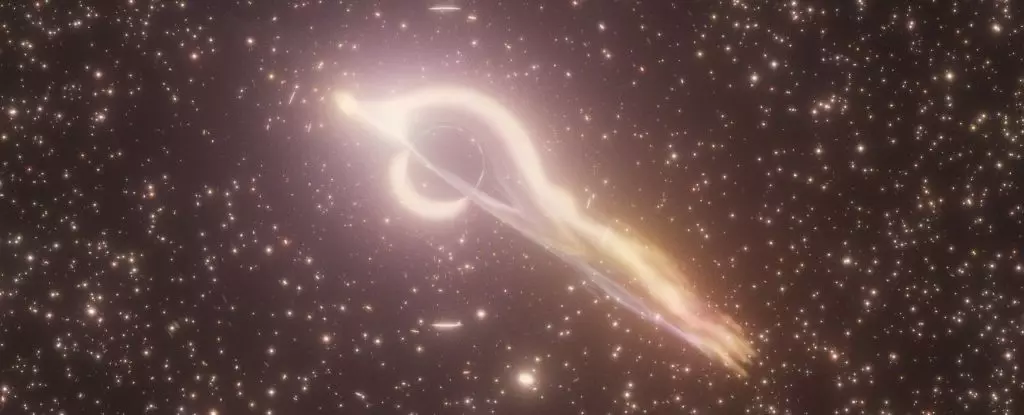Our universe is a vast, enigmatic expanse filled with celestial phenomena that challenge our understanding and ignite our curiosity. Among these phenomena, black holes stand out as some of the most intriguing and mysterious objects. Traditionally, black holes are categorized into two primary classes: stellar-mass black holes and supermassive black holes. Stellar-mass black holes emerge from the violent death throes of massive stars, collapsing into dense remnants with masses up to around 100 times that of our Sun. On the other end of the spectrum, supermassive black holes—residing at the centers of galaxies—boast millions to billions of solar masses, acting as gravitational anchors that influence galaxy dynamics on a cosmic scale.
However, hovering mysteriously in the space between these two well-established categories lie the elusive intermediate-mass black holes (IMBHs). The existence of IMBHs has profound implications for astrophysics because they could serve as the evolutionary bridge connecting the smaller, stellar-mass black holes to the colossal supermassive giants. Historically, detecting these intermediate objects has been extraordinarily difficult, largely because their signatures are faint and sporadic. Their scarcity in observations represents a significant obstacle to understanding how the universe’s most massive black holes come into being—a puzzle that continues to baffle scientists.
A Breakthrough Observation: Shedding Light on the Elusive IMBHs
A recent astronomical discovery has rekindled hope that the quest to understand intermediate black holes is progressing. In a galaxy approximately 450 million light-years away, astronomers observed a sudden, intense flare of light, which indicated that a black hole had awakened from a dormant state and was feasting on a passing star. The excitement stemmed not merely from witnessing this energetic event but from identifying the black hole as an intermediate-mass black hole—something rarely documented in the cosmos.
This event was linked to the X-ray source known as HLX-1. Initially detected in 2009, HLX-1 grew dramatically brighter over the following years, signifying a black hole actively accreting matter. What made this case particularly remarkable was the nature of its luminosity. Its emission was too intense to originate from a typical stellar-mass black hole, yet not near the colossal brightness associated with supermassive black holes. Instead, the observations suggested a black hole weighing between 1,000 and 10,000 solar masses—firmly placing it in the intermediate category.
The pattern of brightness fluctuations over time allowed astronomers to infer the size of the black hole and its feeding habits. Whether this black hole was taking a one-time bite or habitually consuming orbiting stars remains an open question. Nonetheless, this discovery provides a critical piece of evidence, hinting that such intermediate-mass entities do exist and can be observed through their accretion activities.
Implications for Cosmic Evolution and Black Hole Formation
The implications of detecting an intermediate-mass black hole extend well beyond mere classification. It offers vital clues to ongoing debates about the origins of supermassive black holes. The prevailing theories how these titanic objects form often hinge on gradual growth from smaller seed black holes—stellar-mass black holes that gradually accumulate matter or merge with others. Yet, the dearth of black holes in the intermediate mass range has made this process suspiciously inefficient or rare. The discovery of objects like HLX-1 adds weight to the hypothesis that some black holes in the universe might indeed originate from these middle-sized seeds.
Furthermore, understanding IMBHs could shed light on galaxy formation and evolution. Black holes influence their host galaxies through powerful jets, radiation, and gravitational effects. Intermediate-mass black holes might represent the missing link in this cosmic chain, helping astronomers piece together how galaxies grow and develop their central supermassive black holes over billions of years. Each discovery pushes the boundary of what we believe is possible and allows scientists to refine models that describe the behavior of matter under extreme gravity.
While the journey to fully comprehend intermediate-mass black holes is far from complete, each observation, like the recent detection of HLX-1, acts as a catalyst—snapping a piece into the grand cosmic puzzle. These discoveries challenge our assumptions, inspire new theories, and remind us that the universe still holds many secrets waiting to be uncovered. The pursuit of understanding IMBHs is not just a scientific curiosity; it is a fundamental step towards grasping the cosmic story of the universe’s most gravitationally extreme objects.


Leave a Reply